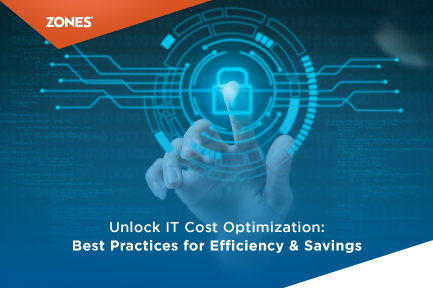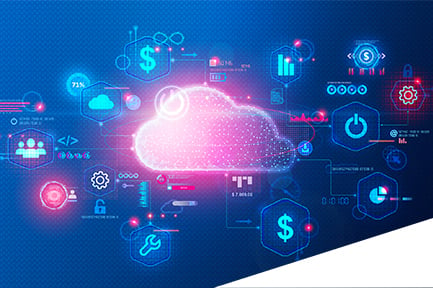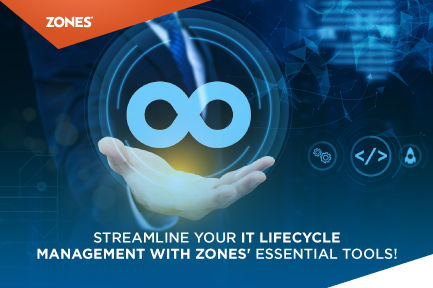Overcoming Challenges in Implementing FinOps for Cloud Cost Optimization
Cloud adoption is on the rise, and businesses must adopt FinOps as a strategic approach to manage cloud costs effectively. With FinOps,...

Organizations rely heavily on IT systems and infrastructure to drive their business operations. With the growing need for technology, managing IT costs becomes a critical challenge. Inefficient IT expenditures can undermine a company’s profitability, especially when it fails to align spending with business objectives.
According to Gartner, global IT spending was approximately $4.6 trillion in 2023, with cloud computing accounting for nearly $679 billion by 2024. This significant growth underscores CIOs and CFOs' importance in implementing strategies that reduce costs while supporting business expansion.
IT cost optimization is an ongoing process of assessing an organization’s technology infrastructure, applications, and services to identify opportunities for cost savings. This includes optimizing cloud services, hardware, infrastructure, and software to maximize efficiency while reducing expenses.
While IT optimization and IT cost optimization contribute to business value, they serve different purposes. IT optimization focuses on overall modernization and efficiency improvements, whereas IT cost optimization is primarily a financial strategy to reduce spending without compromising performance.
To support long-term efficiency and cost-effectiveness, IT cost reduction should be a core component of an enterprise’s broader IT strategy. Key areas where businesses can optimize costs include:
Many organizations attempt to reduce expenses through straightforward cost-cutting - eliminating high-cost areas without fully considering the long-term impact.
While the goal is to save money without compromising business operations or service quality, hasty cuts can backfire, leading to reduced capabilities, lower productivity, and even revenue loss.
IT cost optimization takes a more strategic approach, focusing on sustainable savings that maintain or even enhance business performance.
This involves cultural shifts, such as implementing stricter evaluation processes before investing in new technology, and practical measures, like identifying underutilized or low-value IT resources.
Organizations can reduce costs by optimizing rather than simply cutting while preserving efficiency, service quality, and overall business success.
IT cost optimization is a complex process, often hindered by various challenges depending on an organization's size and structure. As a result, many businesses opt for simple cost-cutting measures rather than proactive strategies that require careful planning and analysis. Key obstacles to effective IT cost optimization include:
By leveraging structured IT cost optimization frameworks - organizations can overcome these challenges and drive sustainable savings.
IT cost optimization goes beyond simple budget cuts - it’s about strategically managing resources to maximize efficiency and long-term value. Here’s how a well-planned approach benefits businesses:
Businesses must implement effective IT cost optimization strategies to manage and reduce costs while improving performance.
Here are five best practices for IT cost optimization that can help businesses get the most value from their IT investments:
Automation can be used to handle repetitive, manual tasks, which eat up time and resources that could be better spent elsewhere. Automation tools can streamline various business operations, including IT management.
Automating tasks like software updates, system monitoring, and data backups can reduce manual labor costs and enhance efficiency. Automation also minimizes the potential for human error, which can lead to costly mistakes or downtime.
Cloud computing is essential for modern businesses, offering scalability, infrastructure, and capabilities that would otherwise be out of reach. However, without proper management of cloud migration strategies, costs can quickly escalate as usage grows.
By using cloud cost management tools, businesses can track usage, optimize cloud resources, and identify areas for cost reduction. Adopting a pay-as-you-go model allows organizations to scale resources based on actual demand, preventing overspending.
It’s essential to build a scalable IT infrastructure that can accommodate future growth without incurring significant new costs. Scalable solutions can be adjusted to fit an organization as it grows in size and complexity, allowing the efficient allocation of resources only where and when they are needed. This reduces overspending and allows the business to stay in control.
Vendor relationships are a significant part of IT costs. Negotiating better rates or more favourable terms with vendors can result in substantial savings. Consider bundling services, asking for discounts for long-term commitments, or exploring alternative vendors offering more cost-effective solutions.
Outsourcing certain IT services, such as help desk support or software development, can be more cost-effective than maintaining an in-house team. Outsourcing allows businesses to tap into specialized expertise without the overhead costs associated with full-time employees, resulting in cost savings.
Zones provides the ideal starting point for assessing your technology portfolio by providing visibility into application architecture, technologies, and infrastructure.
Once you have visibility over costs, it’s time to go deeper. Zones allows you to assess critical IT functions for business capabilities and service delivery, helping you understand the potential impact of changes and where cost optimization will have the greatest effect.
IT cost optimization is not just about cutting expenses; it’s about maximizing the value derived from IT investments. With the right strategies in place, organizations can navigate the complexities of modern IT infrastructure while maintaining the flexibility and innovation needed to stay competitive in today’s fast-paced business environment.
|
Maximize efficiency and reduce IT spend with Zones. Get your custom optimization plan now. |
Recommended Readings:
Conceptualizing AI-First Organizations: Transforming the IT Infrastructure
Cloud adoption is on the rise, and businesses must adopt FinOps as a strategic approach to manage cloud costs effectively. With FinOps,...

Today, managing IT assets throughout their lifecycle has become a critical challenge for businesses of all sizes. Each stage of an IT asset's...

Today, organizations face increasing pressure to balance operational efficiency with environmental responsibility. Due to this, two key areas have...